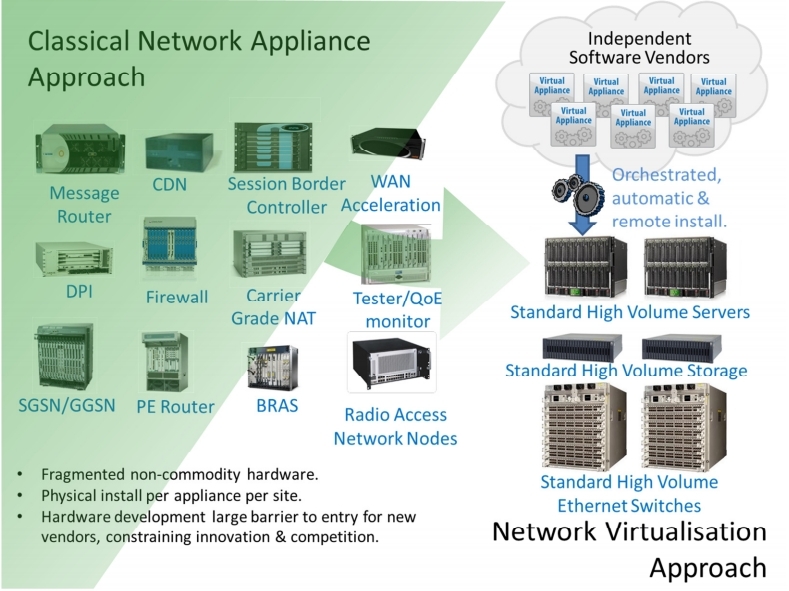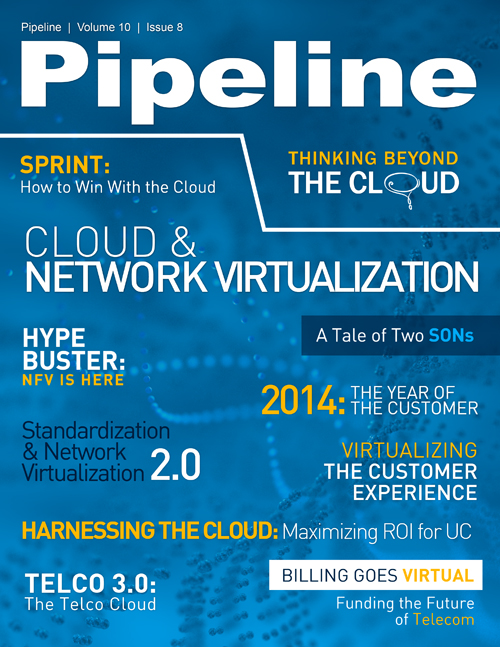More than Hype, NFV is Here
By: Jesse Cryderman

When it comes to acronyms du jour and telecom, healthy skepticism is warranted. For every acronym that lives in the industry lexicon for a decade, there are several with extremely short lifespans.
In 2013 the conversation regarding network evolution was being dominated by two acronyms: software defined networking (SDN) and network functions virtualization (NFV). By applying the concepts of virtualization to the network itself, both acronyms promise to change the way networks are designed and controlled and how services are instantiated, monitored, and managed.
In a nutshell, SDN delaminates the data and control planes of the network and NFV virtualizes the functional elements of the network—routers, switches, firewalls—and expresses these functions as programs that run on commercial off-the-shelf (COTS) IT hardware. While they are distinct technologies, the two work together in concert to turn the network into an infinitely programmable dynamic mesh, versus a hardware-based static map. Where SDN is the network admin gone virtual; NFV is the gear gone virtual.
Together, SDN and NFV promise to deliver a whole new world of networking, but both are in their infancy. SDN lacks open and broadly adopted standards, although standards development work is being performed by the Internet Engineering Task Force (IETF) and the Open Networking Foundation (ONF). Since October 2012, NFV standardization has been driven by the European Telecommunications Standards Institute (ETSI). In October, 2013, ETSI published the first round of NFV specifications as well as an extensive survey of potential NFV use cases that is required reading.
Somewhat surprisingly, communications service providers (CSPs) themselves, not vendors, are driving the development of network virtualization technologies. The potential to dramatically accelerate new service delivery, lower operating costs, and eliminate vendor lock-in has CSPs salivating and network equipment vendors scrambling. Vendors who sell proprietary network gear don’t exactly welcome the thought of their intellectual property being replaced by standardized software running on commodity hardware. This has pushed the timeline for SDN and NFV further out, and prompted more than a few analysts to pull the hype card.
Is it just hype? Let’s examine NFV, since it has been standardized to a degree and has been deployed by several CSPs. Like any technology at the front of its arc, NFV and hype are certainly related—search Google for the words NFV and Hype and more than 1 million results pop up. However, after attending the Digital Disruption conference in October and hearing first-hand how CSPs are investing in NFV, I believe NFV is much more than hype. A quick read of 2014 predictions from leading analysts confirms that this is not an eccentric perspective. Forget the hype: NFV is here.
Virtualizing network functions
ETSI has developed an architectural framework that outlines NFV. While the scope of this framework is not exhaustive, and leaves many elements out, it represents the first step in an evolutionary process. Figure 1 below illustrates the NFV network architecture compared to legacy architecture.

Source: ETSI 2012
Extreme performance increases and cost reductions can be realized by virtualizing functions that once required physical hardware and manual programming. Using commoditized computer hardware, not specialized, vendor-controlled equipment, network functions such as firewalls, DPI (deep packet inspection) appliances, tunneling gateways, and more can be programmed automatically and instantiated in numerous locations. A telecom server could host a router one day and a session border controller the next, depending on demand, latency, and other network conditions; in the past, this would require new equipment, a truck roll, and a network engineer.



















